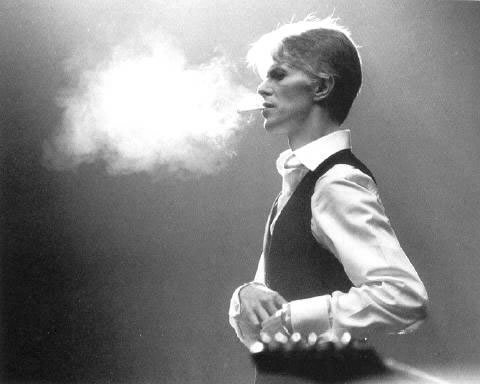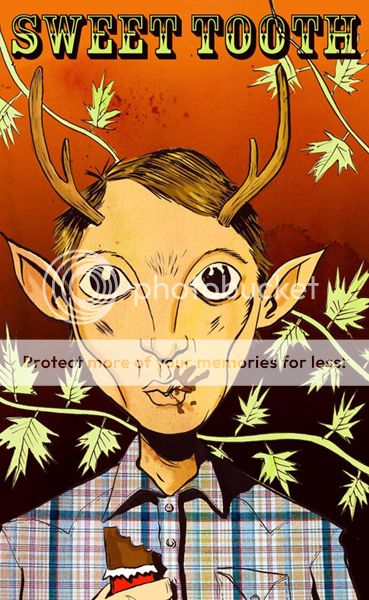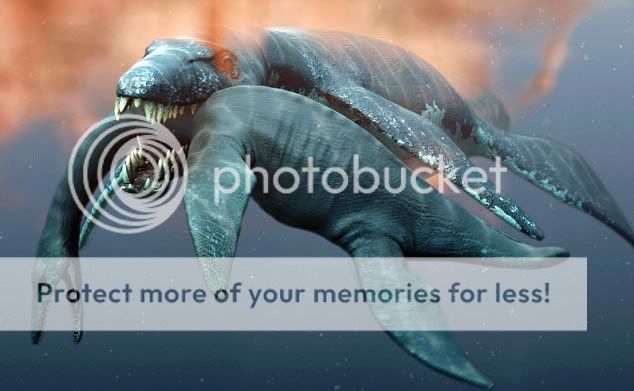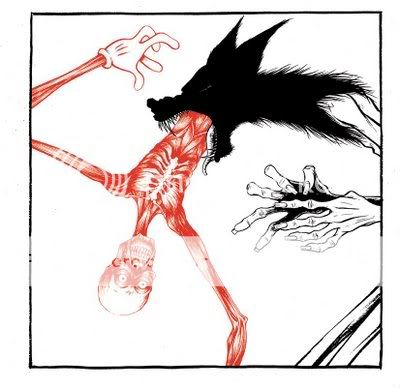SPOILERS FOR THE ENTIRE FRAKKING SERIES AHEAD
* First, this seems like as good a place as any to collect the links to all my Battlestar Galactica posts for this final half-season.
* Episode 4.5.1: Sometimes a Great Notion
* Episode 4.5.2: A Disquiet Follows My Soul
* Episode 4.5.3: The Oath
* Episode 4.5.4: Blood on the Scales
* Episode 4.5.5: No Exit
* Episode 4.5.6: Deadlock
* Episode 4.5.7: Someone to Watch Over Me
* Episode 4.5.8: Islanded in a Stream of Stars
* Episode 4.5.9: Daybreak Part 1
* Episode 4.5.10: Daybreak Part 2
* Here’s a link to that promo for Battlestar Galactica: The Plan, the Jane Espenson-written (boo), Edward James Olmos-directed (yay) BSG movie that will air sometime this fall. It’s about what was going on with the Cylons all this time. Amusingly it doesn’t seem to feature Lucy Lawless as D’Anna/Three, which should be funny to see them try to explain. I wonder what it will reveal.
* Unless they work it in during post, apparently it won’t really address Daniel, the mysterious 7th Cylon model whom Ellen revealed to have been destroyed by Cavil: Ron Moore says that was just a throwaway bit of backstory to give Cavil some Cain/Abel mojo, and that he was taken aback to see speculation take off that Daniel was Starbuck’s deadbeat musician father or something. Obviously, if you were counting on getting an explicit resolution to that plot point in the finale, you were disappointed. But even before I read this interview, I just assumed Daniel was, in fact, Starbuck’s dad, making Starbuck, in fact, a hybrid (or “hylon,” in the parlance of our times), and that this was never going to be explicitly confirmed, just like in Revenge of the Sith (in another opera house scene, amusingly) when the Emperor implies that he was responsible for Anakin’s immaculate conception but never comes right out and says it, yet that’s obviously what we’re supposed to take away from it. We’re grown-ups, we can handle that. I still may prefer believing that to not believing it, I dunno. I read a really interesting interview with Harley Peyton, one of the writers for Twin Peaks, along those lines, where he was like (paraphrasing here) “oh, we never had a master plan that led up to that final image, we came up with that sitting in the writers’ room working on the final episode, but by all means concoct a master plan based on what ended up on the screen–that’s the important thing, not what we were or weren’t thinking all along.”
* You can read some post-finale interviews with Ron Moore at SciFi Wire and with the Chicago Tribune’s Maureen Ryan, probably the biggest BSG blogger around. Her interview is just one part of a massive post-finale post including some details about which episodes will be expanded in the DVDs, additional interview snippets with various cast and crew members, and her own thoughts.
* I’ve continued to think about–you might almost say “dwell on”–the finale, and the more I do so the more impressed I get. I don’t think even the Sopranos finale made me feel this way. What’s really sticking in my gut is trying to get there from here, trying to mentally and emotionally link the early episodes where there were terrorist attacks in restaurants and arguments about abortion and rigged elections and such with a finale where the two warring societies essentially give up, disperse, and fade away into history, becoming barely a memory to anyone. Talk about a finale that makes you reevaluate the entire series! It’s just about as gutsy as I’ve seen television get.
* I think this is due to what Malcolm Sheppard says in this thoughtful post (link via Jim Henley):
In the end, both cultures collapse and their bearers don’t resist it. This is a hard pill to swallow because we’ve been acculturated (ha!) to believe there’s a transcendental value in cultural continuity, that a cultural collapse is by nature apocalyptic, and that it won’t happen to us, but none of these things are necessarily true.
In much the same way that Starbuck’s greatest fear was to be forgotten, our greatest fear as a culture is the same thing. We cling to the narrative of human progress that shows a steady build toward knowledge and freedom from the Stone Age to the present day, ignoring any number of separate strains and cultural-evolution cul-de-sacs along the way, even within Western culture (we barely made it out of ancient Christianity’s dark-age deathgrip!). Our great collective horror story is the apocalypse, brought about by any number of factors–nuclear war, biological weapons, disease, climate change, aliens, technology run amok, zombies, you name it–but always with the same result: the story of humanity coming to an abrupt end. We care about the survivors of such stories at least as much for whether or not they survive to continue telling that story as we do for their survival in and of itself. Naturally we saw Battlestar Galactica in that same light, and so did the show’s characters, desperately attempting to perpetuate the social and political institutions that characterized their lives before the fall. For them to say “enough” and willingly fade away…that is a hard, hard pill to ask your audience to swallow, but I’m glad I’ve been respected enough by the creators to be asked to do so. It’s certainly made me re-think things a lot more than a traditional truce or victorious ending would have. This was a truce and a victory in its own unique way.
* And now for some barely coherent musings on “God” and Its role in the finale.
* It’s interesting to see how different people’s expectation for the show’s ending was from what the show had been basically promising to deliver all along, which was a heaping helping of honest-to-gods mysticism. I think you’ll see several different cultural forces converge in terms of people who vocally don’t like “God”‘s direct involvement in the finale in the persons of Head Six, Head Baltar, and Kara:
* First, there’s your basic internet-fandom contingent, which insists that everything must be SERIOUS BUSINESS and have logical explanations that can be “solved” like a puzzle; to the extent that “God” is a supernatural force, it is less serious and less solvable than, say, a science-based explanation like hallucinations or brain implants from the Final Five. These folks appear to have believed that all the god-talk all along was a fake-out, that the show didn’t really mean it. For a lot of them, having the “divine” play a role in the finale, any finale, is automatically a deus ex machina in the pejorative sense–you see that phrase everywhere.
* Second, I believe there’s a goodly chunk of hardcore SF buffs to whom the word “angel” is automatically STUPID in all caps. The Tor.com roundtable on the episode has to be the ne plus ultra of this particular subgenre–the very thought of how the Head characters and Starbucks resurrection were explained seems to have sent them into caps-locked apoplexy. Seriously, you really have to see it. Again, an active role for the divine is an automatic deus ex machina. NB: Please forgive me if I’m mischaracterizing the participants in the Tor roundtable as serious science fiction experts–I really don’t know, I’m just assuming given the site. Maybe they’re like AICN talkbackers, I dunno. Certainly the fact that many of them watched it in a group, screaming at the screen all the while, reminds me more of Internet fandom than people who read Foundation a lot. Also NB: Not all serious SF fans are like that. For example, Jim Henley, for whom speculative fiction is but one of many many topics about which he is much much smarter than I am, liked that aspect of the finale, and by extension the entire series, better than pretty much any others. He also locates it in a rich tradition of SF literature about humanity, divinity, and the spirit.
* Third, there are people who misinterpret a lot of what was actually said and depicted in the finale and base their most vehement criticism on that. For example, there’s a popular notion that the episode was explicitly Luddite, with the Fleet’s survivors reject all technology, not just jettisoning their ships. This was demonstrably untrue.
* Another example: People who felt like the closing montage of increasingly sophisticated humanoid robots here on present-day Earth (well, “Earth”) meant that the whole point of the show was that Ron Moore is warning us against making robots. (I think someone said exactly that in the Tor.com roundtable.) To me, it’s pretty obvious that the robots here were used the same way the Cylons were used all along: as symbolic shorthand for everything the human and Cylon cultures did wrong, not just “technology run amok,” let alone “don’t make androids, they’ll kill you.”
* Another example, and perhaps the most fundamentally mistaken: Over religiosizing/spiritualizing “God” and “the angels” as presented in the finale. To hear some people talk about it, you’d think Jesus of Nazareth entered “All Along the Watchtower” into the nav computer and jumped the ship, or that human and Cylon reached a truce by proclaiming their shared belief that there is no god but Allah and Muhammad is His Prophet. But the “God” posited by Battlestar Galactica is a very, very weird one, far both the Biblical/Koranical God of our understanding and the gods of the Colonials and the One True God of the Cylon Centurions and skinjobs. In his speech in the CIC, Gaius Baltar argues that “God” is “beyond good and evil–we invented those.” Head Baltar later tells Head Six that “God” “doesn’t like that name,” implying that It is something very different than the deities worshipped by Colonials, Cylons, and Earthlings alike–perhaps even another physical species, albeit one so advanced that its doings look like magic to us. Meanwhile, take the behavior of the “angels” themselves. We never saw what Head Baltar and Caprica Six got up to, but Head Six’s primary angelic activity was giving Gaius Baltar handjobs and encouraging him to save his own bacon by getting other people killed (and occasionally saving their lives, but only when it suited her). The two Head characters were both pretty smarmy and sinister, even at the end. And Kara? She was an “angel” who had no idea that she was an angel, and was pretty miserable–borderline crazy–over it. These are not traditional Gabriel or Christ figures by any stretch of the imagination, and it’s both reductive and incorrect to imagine them as such.
* Related: My biggest eureka moment since watching the finale came (unsurprisingly!) when I read the great Todd VanDerWerff’s review of the episode, in which he said this:
Battlestar has always had a weird strain of Gnosticism running through it (particularly in Baltar’s sermons), so the notion of God as a sometimes altruistic and sometimes destructive force that operates independently and can never be fully comprehended by our characters managed to plug into the series mythos fairly well.
I think I literally cheered and smacked my head when I read that. Why? Because one of the hardest parts of the last two half-seasons to swallow was Baltar’s religious…whatever you’d call it. Conversion? Hucksterism? You couldn’t even tell. At times he seemed utterly, even frighteningly sincere, and then next time you saw him he’d be his old scheming cowardly manwhore self. You’d see invisible Head Six feeding him his lines, even physically manipulating his body to get him to rise up after a beating from a Marine in one episode, and then she’d disappear for half a season. But most importantly, you’d get mixed messages in his sermons themselves. The two that really hit home with me were the one from last half-season where he told his followers that God loved them because they were all perfect–a total absolution of responsibility, really some breathtaking theology–and then the one after the discovery of the ruined Earth where he says we’re right to be angry with God, that God in fact owes us an apology. Discovering that God is really “God”–some inscrutable force that isn’t the omnipresent, omniscient, omnipotent, omnibenevolent deity we know, but is instead “beyond good and evil,” “sometimes altruistic and sometimes destructive” as VanDerWerff puts it–squares the circle with all this contradictory information and makes the Cult of Baltar finally make sense.
* The final group of naysayers that I can see at work don’t really have an underlying philosophical or aesthetic program in terms of their objections: They just don’t like all the coincidences and “fate” stuff that added up to create what happened in the finale. Racetrack’s dead hand hitting the button to nuke the Colony…Starbuck using the music to enter the right coordinates…a second Earth…Hera as mitochondrial Eve…Baltar’s speech being enough for sociopathic Cavil to change his mind, and Adama and the rest of the gang buying that change…the Chief/Cally/Tory storyline bubbling up again just in time to destroy the truce and ignite the final confrontation…Starbuck being resurrected to get the fleet to Earth-1 and Earth-2 and then just disappearing…the opera house visions perfectly syncing up to the chase for Hera in the Galactica…it’s all just a bit too much for these folks to swallow. I think I have the least beef with this objection than with any of the other. Battlestar Galactica has never been the most subtle of shows, but up until now its bluntness has generally been in the service of entropy, atrocity, catastrophe, depression, disillusion, failure, things falling apart. All of a sudden you’re required to be okay with everything lining up just so to create…a happy ending?
* Now, don’t get me wrong, I think this is simplifying it too much. The “happy ending” that would have been easiest for the show to do would have been the truce between the Fleet and Cavil’s Cylons actually working out–they get the resurrection technology, we get left alone, everyone goes their separate ways, the end. The show complicated that by having Chief fuck it all up, straight-up murdering Tory for straight-up murdering Cally, who I’m given to understand is one of fandom’s least favorite characters. Then there’s all the complicating details about the role of the divine and the approach to technology that I listed above. Then there’s the fact that the “happy ending” can only be understood as such if you put aside cultural conditioning regarding the importance of cultural continuity. So it really isn’t just a bunch of too-neat, sledgehammer-subtle coincidences forcing us where the show wants us to go.
* In fact, the biggest risk the show takes in the finale is sending us in so different a direction in the first place. The audience of Battlestar Galactica has been trained to expect the worst–and now, in the finale, we’re required to accept the best, however briefly it ends up lasting. In fact I’ve seen many complaints about that alone–that it’s too happy an ending, that it’s like kumbaya or something, that not enough non-“evil” characters die, and so on. I think that’s the toughest thing for many people to swallow: Not only must you accept the coincidences or fate or whatever you call it, but you must accept them on behalf of an ending as emotionally wide-open and optimistic as those vistas of our unspoiled planet. You’re either in the mood to resign yourself to hope, or you’re not. I am.






















